Grindal Ysteri: Seter farming, raw milk cheeses
Digital cow bells and blurring the line between modern and traditional.
Fairly close to tree line , a mountain farm sits amongst short birch trees, ponds, bogs, and flowing creeks. Cows and goats graze unfenced, not as a multi-species herd, but as two groups. The grazing of the cows is managed by a modern technology provided by a Norwegian company called No Fence. The cows wear what I view as a modern version of a cowbell. A clunky black box hangs from a neck collar, combining a GPS unit, shock collar, battery, and solar panels. The box communicates with an app on the herder’s cell phone, allowing cows to be tracked, and their movements and grazing patterns displayed. Boundaries are set digitally, and the cows trained to turn back when a series of sounds indicates they are getting close to the perimeter. If they continue past the border, they receive a light shock. In this way, property or grazing lease boundaries can be set, and areas inside excluded from grazing. Apparently some are incorporating this system into Rotational grazing, but I have not seen that yet.
A few of the goats wear a simpler GPS unit, and their movements can be tracked and charted. The display of a few weeks of their movements shows how they travel out from and back to home base, as they trace many spokes, distributing their browsing fairly evenly while on the move over a circle with a radius of 1-1.5 miles. Goats seem to eat the most, and be happy and healthy when they can move freely through a large range of plant communities, picking at a diverse smorgasbord to fulfill what Fred Provenza calls their Nutritional Wisdom.
My work involves documenting traditional dairying, cheesemaking, and milk preservation methods. But I am not a Luddite, I see nothing inherently wrong with herders utilizing state of the art technologies to aid in their work. Generalizing broadly, many pastoral societies display a trait of openess to new technology, and quickly embrace practical tools and methods when exposed to them. Sometimes conservative tendencies and thrift cause the opposite to be true. But I am opposed to the expectation that these groups stick to their old tools and techniques if they make the choice to shift. I cannot ask people to put themselves in a museum, so that I can come along and salivate over their quaint ways while recording videos on my IPhone.
In the next few posts I want to talk about the cheeses made by a small farmstead company that I have a lot of respect for. Ragnhild and Turid Nordbø are the sisters who run Grindal Ysteri, and I spent a week with them on two summer mountain farms, known as Seters in this part of Norway. They are exemplars of many of the values I hold as a cheesemaker, herder, and lover of animals, plants, and living landscapes. Their cheeses and farming practices are a blend of old and new, and represent what interests me: the movement of the traditional into the modern (that binary distinction, like all dualisms, is a simplification I hope we can move beyond). The reinterpretation of established practices into the dialogue of the present. I could phrase this theme many ways, but I think you get it. For me, this is not about clinging to the past and sticking to simplistic projections of what is “traditional”. It’s about what we are going to do now, as the old ways shift and dissolve, to incorporate the wisdom of the past into the conscious evolution of new food systems and more sane, practical ways of living. Turid feels that technologies like No Fence and E bikes make the lifestyle of mountain farming more appealing for young people who wish to become involved. For the old ways to continue, there needs to be enough comfort that people want to take on the work. Much of how farming was done historically was not healthy for our bodies and spirits, no matter how romantic it may appear.
Some of their cheeses represent a current trend in Norwegian cheesemaking of embracing styles not considered “traditional”. A superb blue for example, that is creamy and mild, with a tasty natural rind that reminds me of some of the UK blues I am so fond of. A washed rind goat/cow blend called Seterost, aged in a stone cave with a creek running through it. This combining of milks points to the tradition of keeping and milking both goats and cows, but the cheese is modern one.
The two cheese I will focus on in the next post are a pair of rare “relic cheeses” - meaning those that have survived from an earlier time and are of historical and sentimental interest. Gamalost is one of cheeses most often associated with Norway, and is a sour skim milk, rennet-less cheese. From its sour whey a special kind of Brunost (brown cheese) is made called Surost or perhaps more accurately, surmyssmør, sour whey butter. This is a cheese I posted about on instagram awhile back , and it resembles a dark brown rock or loaf of desiccated bread.
I am very impressed with the cheeses I have been tasting in Norway, and with the conversations happening here around food-ways, farming, and milk. Many of these cheeses and the people who make them will be involved in the upcoming World Cheese Awards held in Trondheim, October 26th -28th. I encourage anyone interested in attending to check out the websites of Norsk Gardsost and Ostelandet Norge for more information, and to make plans to attend and get involved.

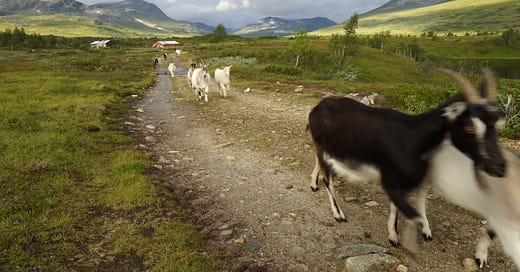



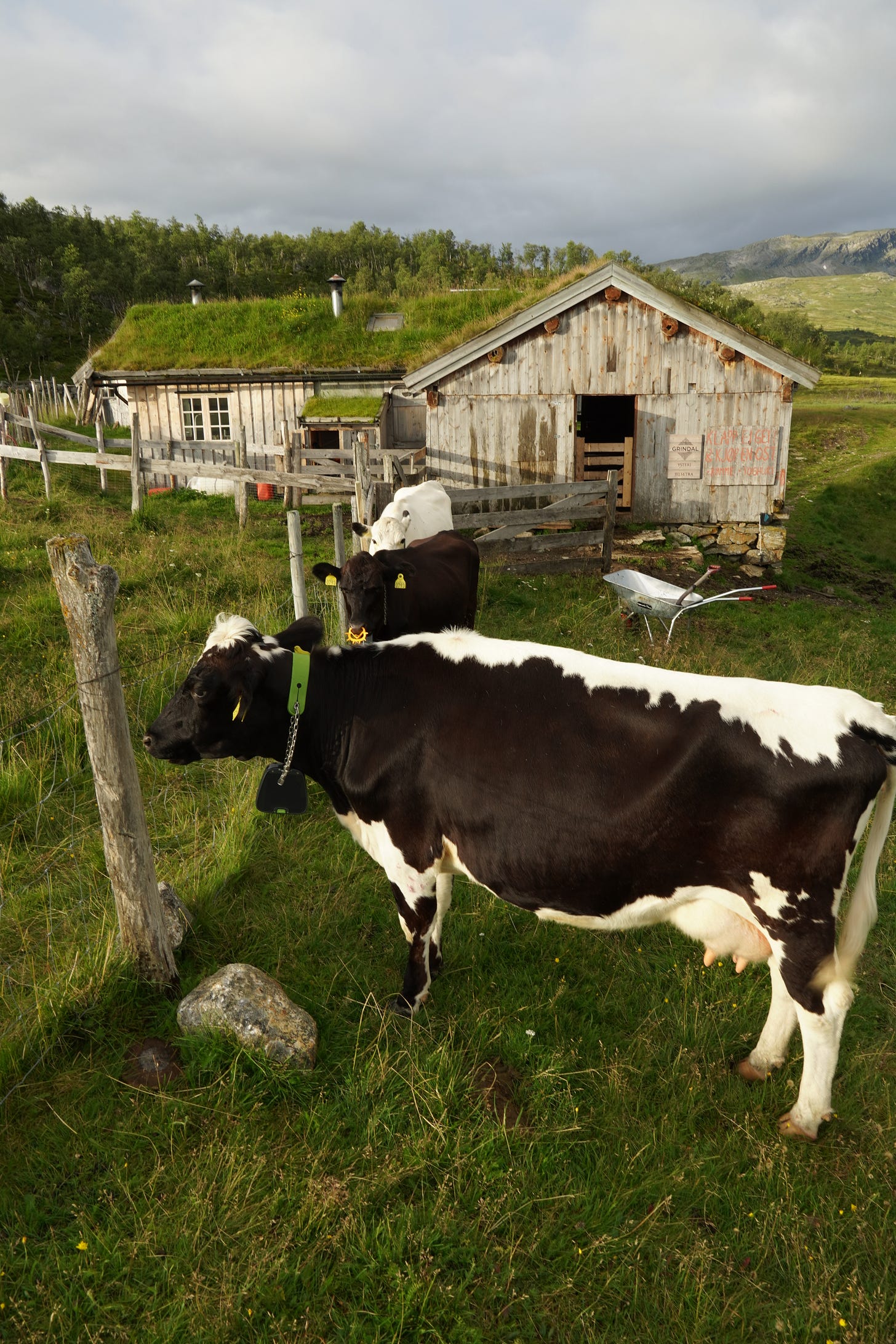
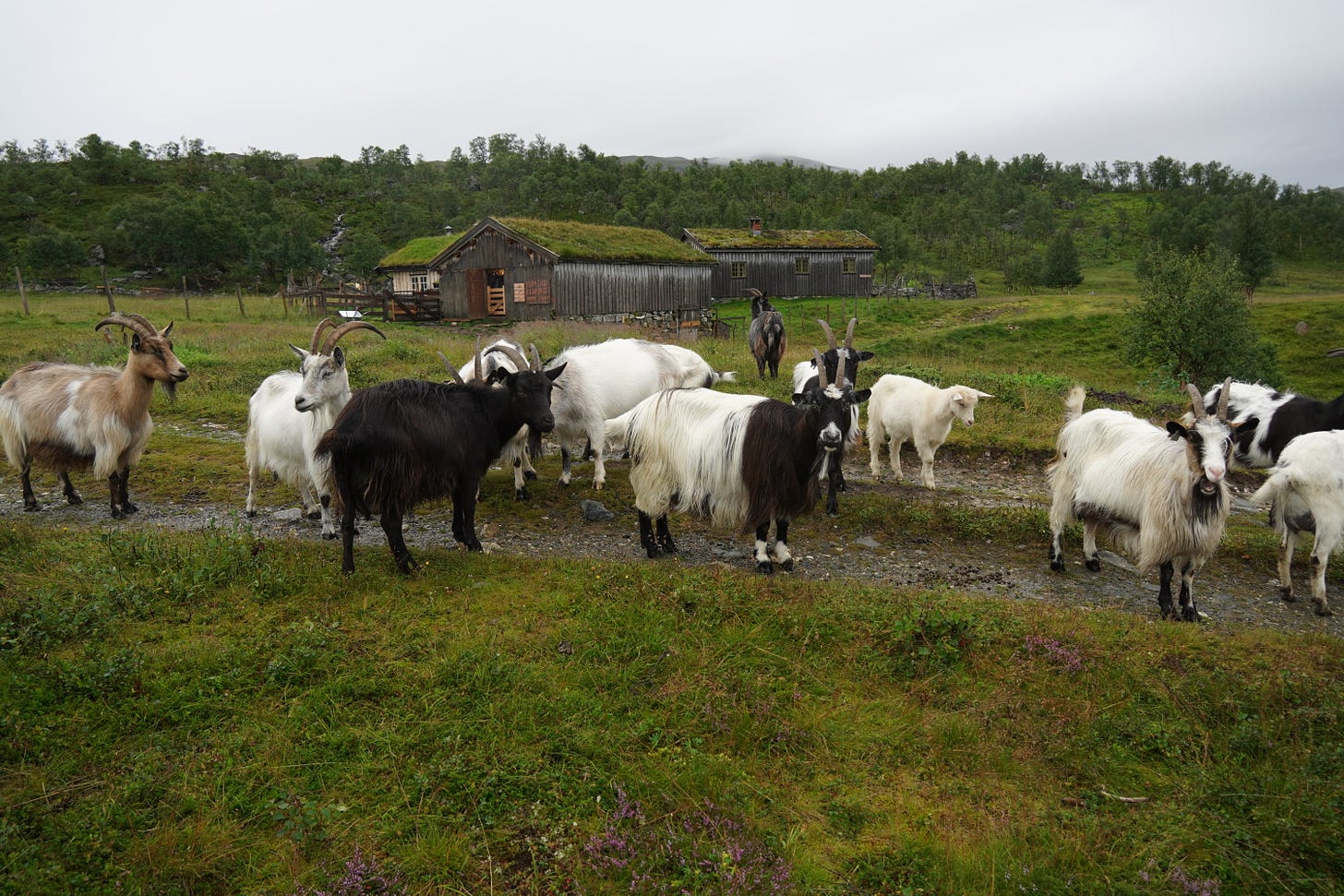

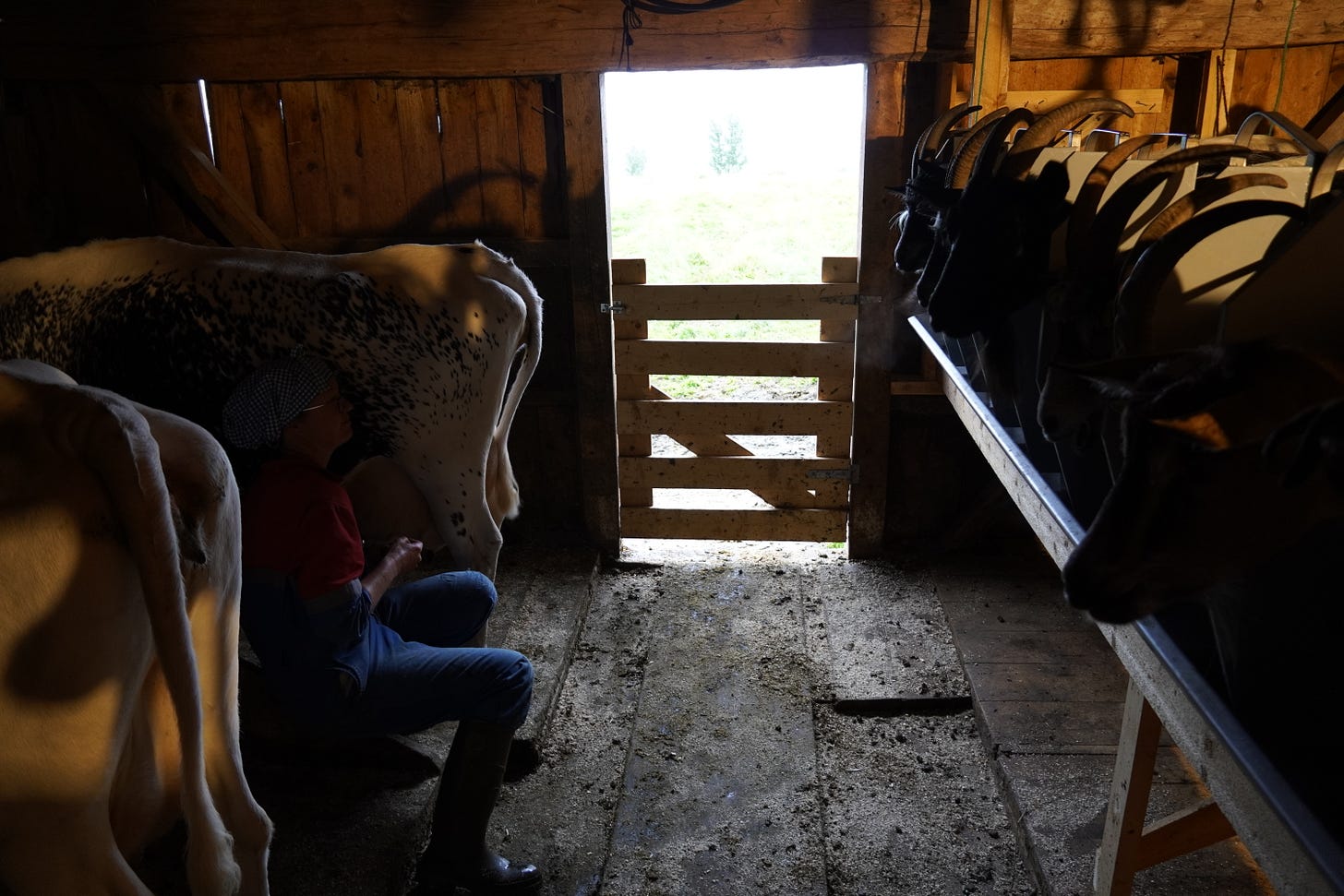
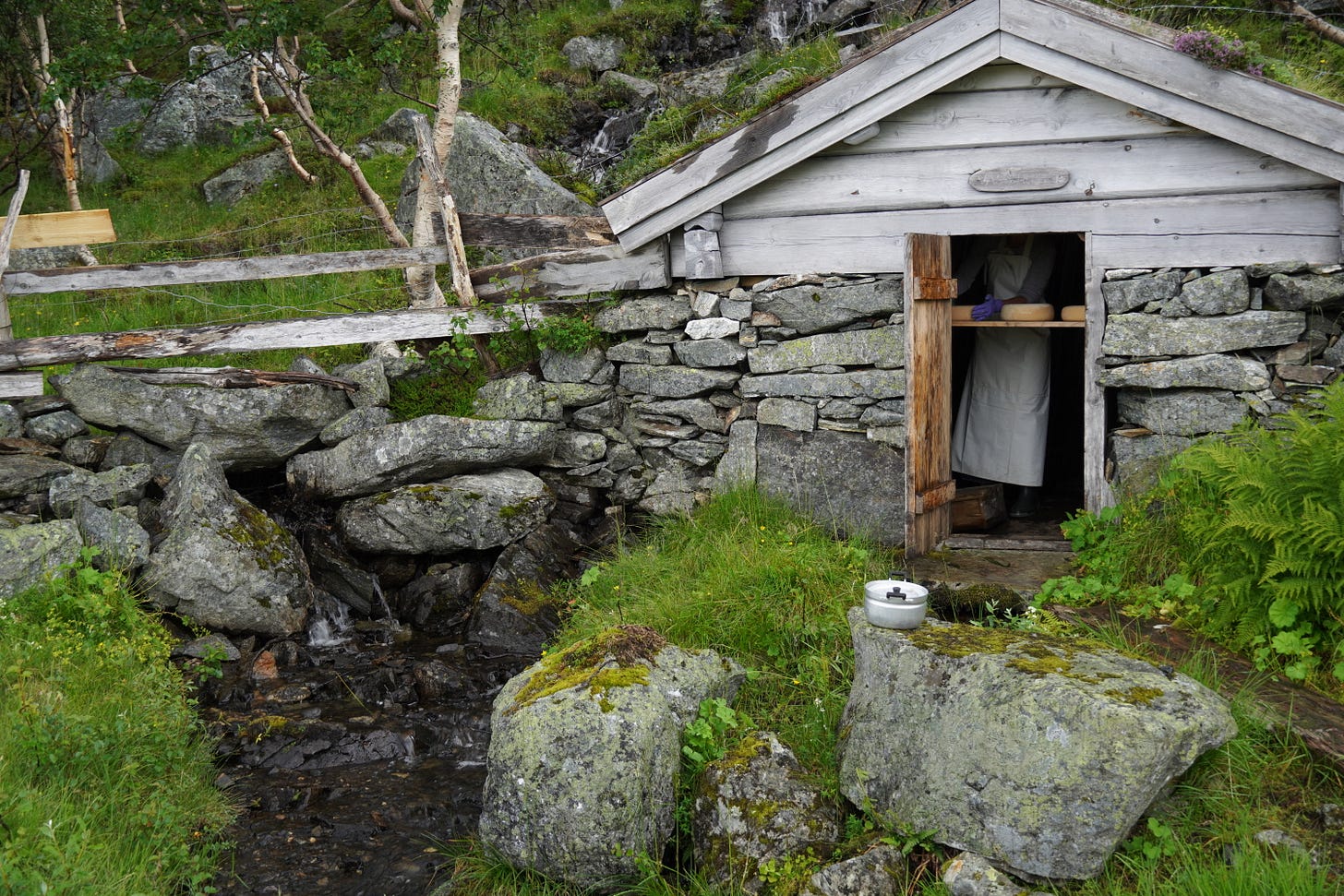
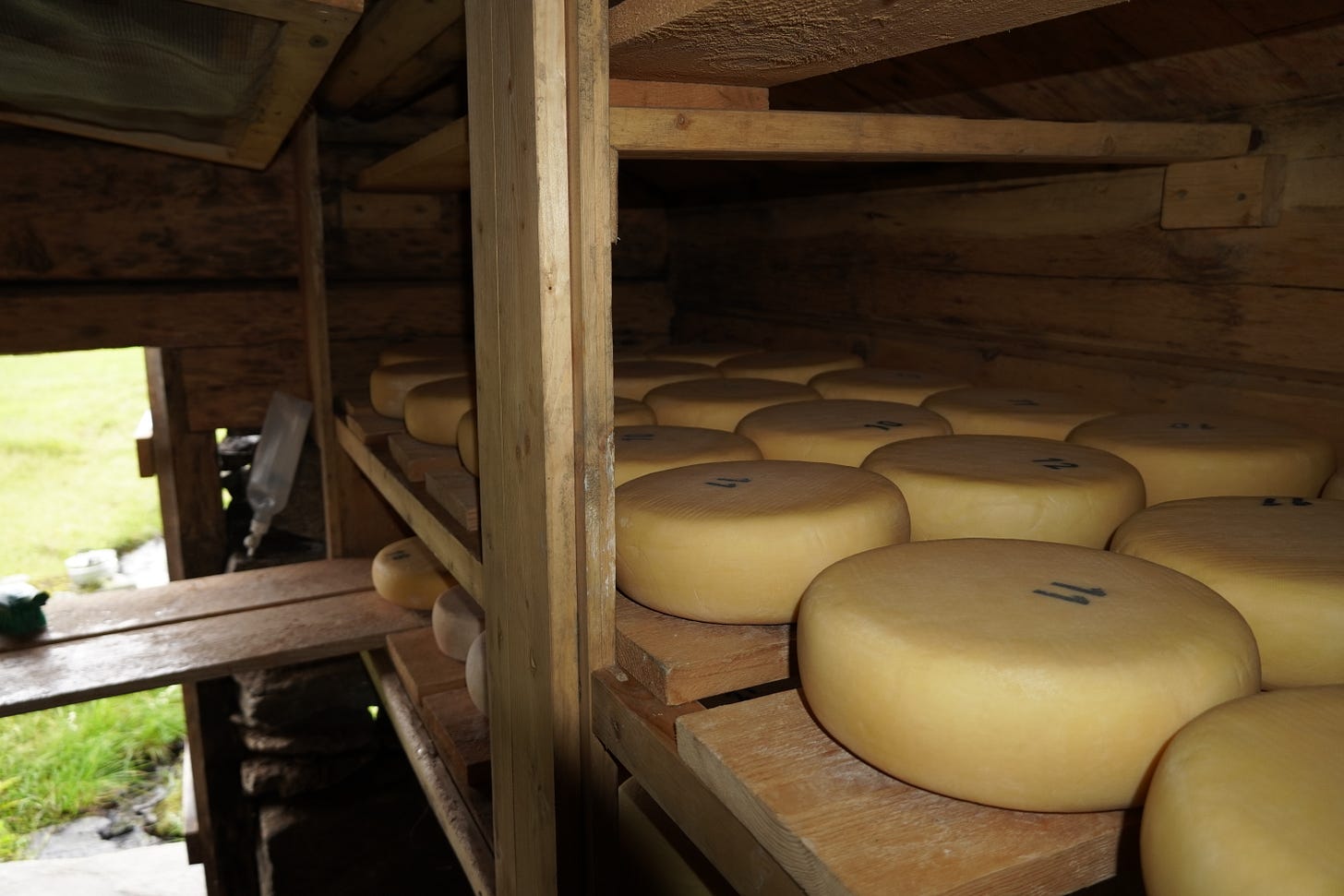
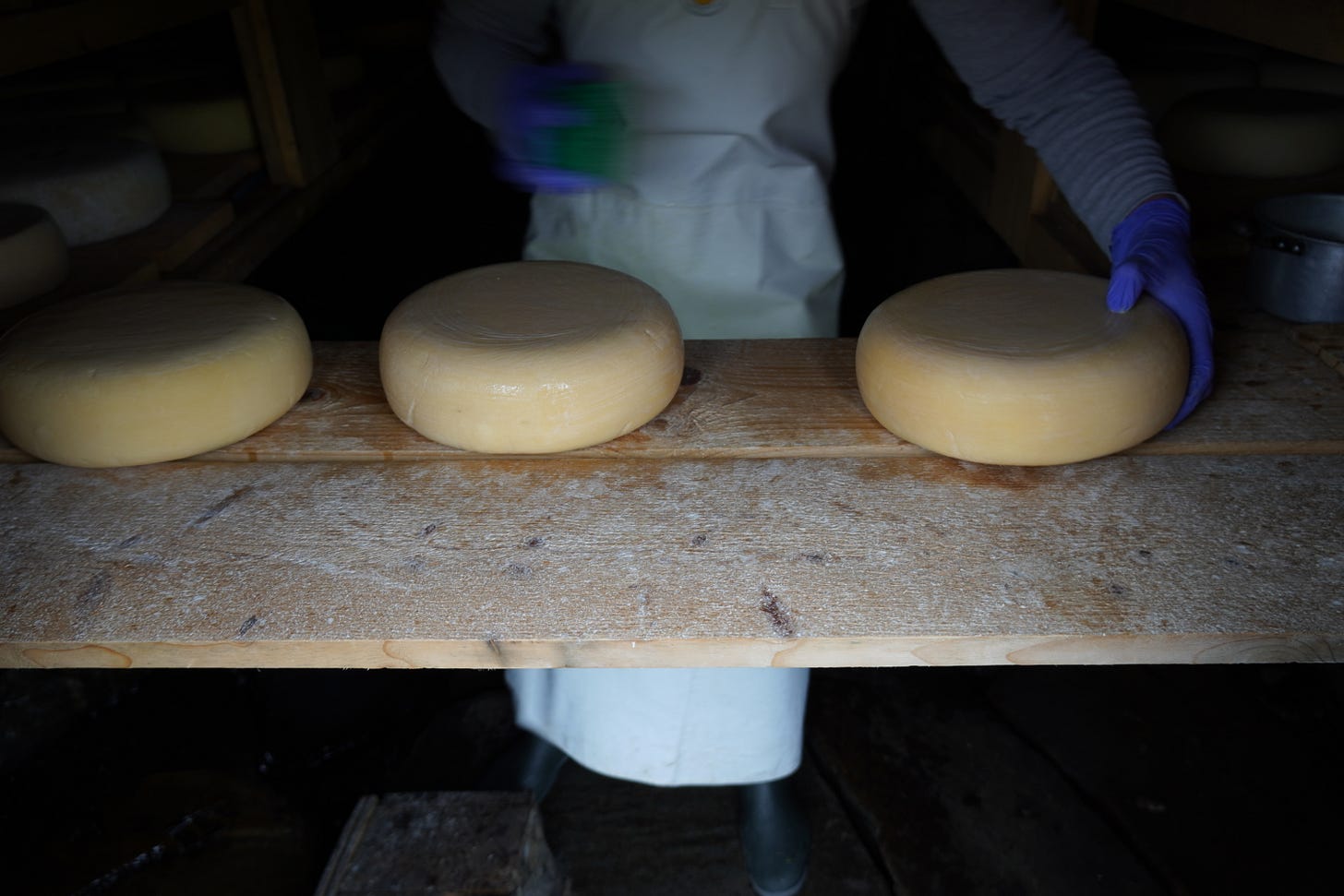

So appreciate your work and thoughts!
Love all these great stories! Thanks for being willing to share with us!
Although Im horrified with the electric collar for cows...whats next? That is just too much...
poor aniamls...lazy people...barf! I don't want milk or cheese from an electrocuted cow!